I didn't go to Mexico with an agenda or even an idea of the kind of pictures I wanted to take. But as soon as I got there in 2008, it became clear what a widespread impact the conflict was having. I wasn't interested in creating a story about violence that happened to be set in Mexico. I was inspired by Mexico's present situation, which includes violence but is also a window into a time that will be referred to for decades, as people try to make sense of Mexican society. I want the work to convey a sense of Mexico, her colour, her complexity and her culture. This isn't a story about body counts on the border.
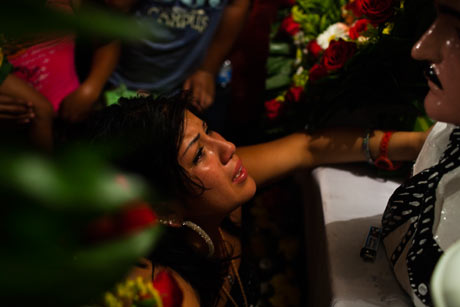 A young woman weeps in front of a bust of Jesús Malverde in Culiacán, Sinaloa. Jesús Malverde is a folk saint believed to look after criminals
A young woman weeps in front of a bust of Jesús Malverde in Culiacán, Sinaloa. Jesús Malverde is a folk saint believed to look after criminals
I've worked in environments that were equally as challenging before, and similar themes always emerge: a lack of economic and educational opportunities, issues of corruption and broken judicial processes. But personally, I had not been in an environment where there was such brutality and gruesome acts of violence occurring so frequently and so publicly.
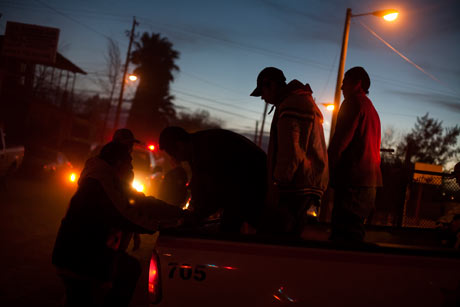 Men who have just been arrested by police in Nogales, Sonora
Men who have just been arrested by police in Nogales, Sonora
On several occasions, I knew I was being followed or filmed, and a few times people told me to be on my way. But I never felt I was in imminent danger; I often worked with Mexican photographers and writers who faced a far greater threat than I did. They go to work every day and report heroically on what's happening. They know the communities best and they risk their lives daily. As a foreign photographer, I was able to work in relative obscurity. I found people I trusted, but beyond that, if something didn't feel safe, it probably wasn't safe.
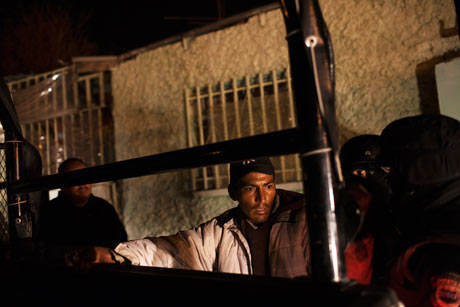 Police in Ciudad Juárez frisk a man during a security sweep. The police say that they routinely detain men who they deem suspicious claiming that it is a preventative measure to ensure a calm evening
Police in Ciudad Juárez frisk a man during a security sweep. The police say that they routinely detain men who they deem suspicious claiming that it is a preventative measure to ensure a calm evening
The situations that felt most tense were not at crime scenes or with police, where people's roles were clearly defined. Rather, whenever I walked into a nightclub or an auto shop – any seemingly mundane situation – there was always a veil of suspicion; I wasn't completely trusted because I had a camera. And I couldn't be sure of the people in my surroundings any more than they could be sure of me.
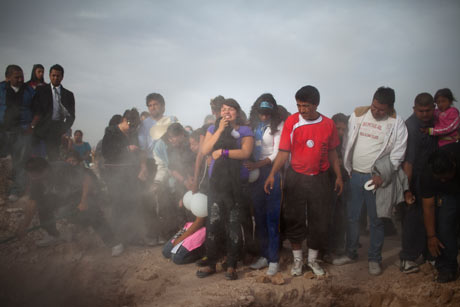 Friends and family mourn at the funeral of two sisters in Ciudad Juárez
Friends and family mourn at the funeral of two sisters in Ciudad Juárez
I had been spending time in Ciudad Juárez and happened to be there when there was an awful massacre at a birthday party. Apparently, masked gunmen stormed in looking for one specific person and started shooting up the place. They killed more than a dozen people, most of them teenagers. It turned out the person they said they were looking for wasn't even there. Several of the victims had joint funerals, and this image comes from one of the funeral ceremonies for two sisters who were killed at the party. I thought this encapsulated the intense pain that such senseless violence causes.
 People visit a cemetery at San Gregorio de Atlapulco on the Day of the Dead
People visit a cemetery at San Gregorio de Atlapulco on the Day of the Dead
It was important that my work was diverse, and didn't solely focus on crime scenes at the border. I wanted to look at how migration patterns, and the lives of migrants, had been affected – as well as cultural responses to the conflict. This meant I spent a fair amount of time travelling with migrants and looking at the emerging narco-culture.
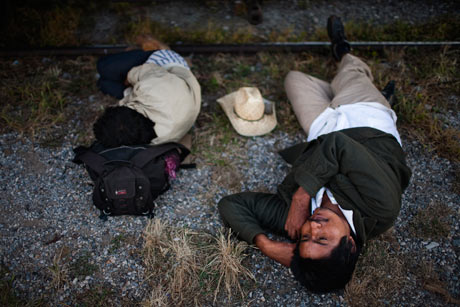 Two men, who said they were migrants hoping to ride north on top of a freight train, sleep next to the tracks at Arriaga so that they can be sure that they hear the train departing
Two men, who said they were migrants hoping to ride north on top of a freight train, sleep next to the tracks at Arriaga so that they can be sure that they hear the train departing
Some situations instantly came together, while others took weeks. It was about putting in the time and building relationships. The starting point is always personal: when I talk to people before I photograph them, I have to show I'm interested, and that they're not simply props in preconceived tableaux I've imagined.
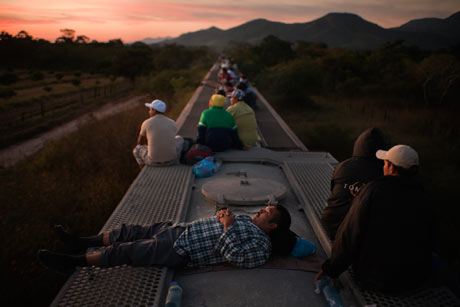 Central American migrants in Chiapas ride on top of a freight train carrying cement as they head north in an attempt to enter the US
Central American migrants in Chiapas ride on top of a freight train carrying cement as they head north in an attempt to enter the US
I spent a week in various shelters meeting migrants and waiting for a train to come through town that was heading north to the US-Mexico border. I had met a group of men I liked, who were travelling together, when a train came through town. We climbed on top of one of the train cars, which I believe was carrying cement. I was struck that many of them were going back to the US to return home – not go to a foreign land. They had lived in the US for years, had children in the country and, for a variety of reasons, had returned to Mexico or were deported. Now they were risking everything to reunite with their families. They all told me this trip was more dangerous and they were more fearful: the migrants and drug smugglers were now sharing the same space and the migrants faced new threats. Some had been forced to mule drugs across the border, and many now had to pay an exit tax to the cartels to leave Mexico. The threat of kidnapping, robbery and murder had drastically increased with the rise of the drug war. Migration routes, and what migrants were willing to risk to achieve their dreams, had been drastically altered by the conflict.
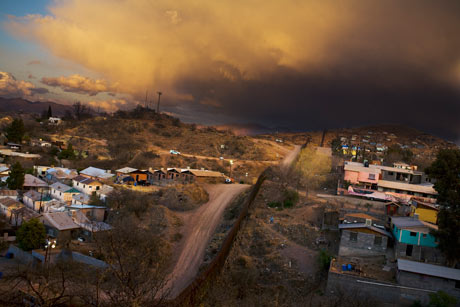 The border fence runs between Nogales, Arizona, and Nogales, Sonara. There has been little violent spillover into the US though there have been cases of US citizens killed in Mexico
The border fence runs between Nogales, Arizona, and Nogales, Sonara. There has been little violent spillover into the US though there have been cases of US citizens killed in Mexico
I remember just before I got off the train that we passed a field filled with fireflies. It was one of the most beautiful things I've ever seen. There were so many it was as if they were a reflection of the stars in the sky. I think my work is a true representation of how I experienced Mexico while I was living there. Unspeakable, atrocious things were happening in parts of the country but there was still an intense beauty permeating the atmosphere.
I want people to feel as if they had been standing in the same spot, in the same moment in time, that they could have seen the exact same thing.
I want people to feel as if they had been standing in the same spot, in the same moment in time, that they could have seen the exact same thing.
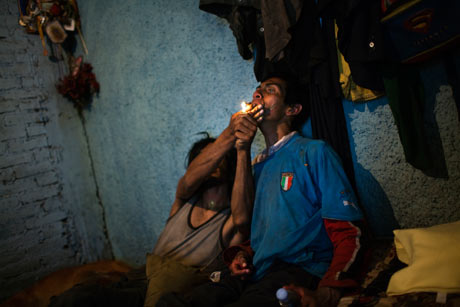
No comments:
Post a Comment